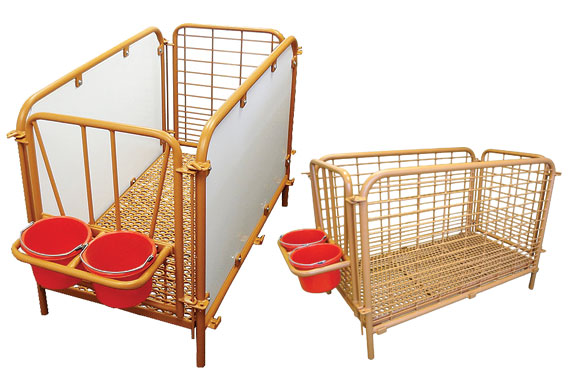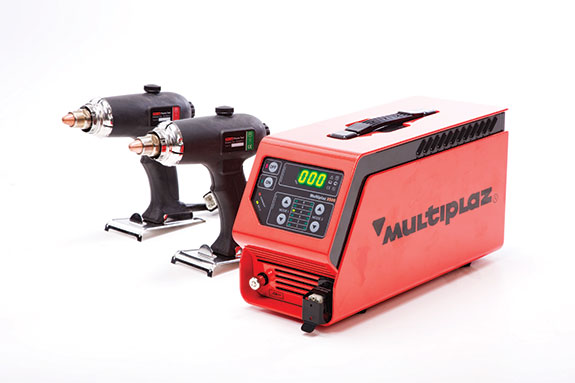DVM Systems has added a new feature to its rumen bolus temperature monitoring software: ovulation detection. CEO Kevin Wild and Dr. Wade Webster, DVM’s director of science, discuss the development of this new product.
What is your new product?
WILD : TempTrack RePRO. It builds upon what we’ve done with our software for early illness monitoring.
What is the history of this product?
WILD: We started DVM Systems in April 2009. We took the results of many years of temperature-based research and built upon that with research of our own in the U.S. and Canada. We have incorporated all that research into DVM’s TempTrack RePRO software. Our software intelligence is the key to bringing the benefits of temperature monitoring to dairy producers.
What is the research you’ve done with this new product?
WEBSTER: We are wrapping up a one-of-a-kind study in California right now. We are monitoring animals hourly for temperature changes. Then we using two gold standards of evaluating ovulation – testing progesterone levels and using real-time ultrasound – to verify ovulation in a timed-A.I. program. The results will be submitted for publication in a peer-reviewed journal.
WILD : We have previously shown temperature to be indicative of ovulation. We wanted to show this in a large-herd setting. It’s a commercial 12,000-cow dairy. We are tweaking our software with the results of this study. We have two other breeding studies in progress that are confirming the use of temperature to identify ovulation.
Why is there a need for this product?
WILD: Our products and software can help dairy producers improve estrus detection, conception rates and, ultimately, pregnancy rates.
WEBSTER: All of the different breeding programs that exist today have not been as successful as we would like them to be, considering current pregnancy rates. None of them help us see corpus luteal function. We have had to wait 30 to 33 days for rectal palpation or ultrasound to verify if there was a pregnancy. Now this software answers the question: Did the animal ovulate? Yes or no? This goes well beyond complementing existing programs.
How long has this been in development?
WEBSTER : The first evidence that we could pick up temperature change that identifies real-time ovulation was known as early as 1959.
WILD: From our company’s inception, we felt breeding improvement was the heavy-hitter of temperature monitoring. We’ve been working on all three benefits of temperature monitoring – early illness detection, breeding improvement and parturition alerts. The breeding improvement aspect of our software took time to develop because it’s a complex scientific undertaking to build the algorithms and test them in order to have a high rate of confidence that they accurately monitor ovulation. We are also finalizing the inclusion of parturition alerts that will signal a pending delivery in the next six to 12 hours.
What type of producer do you think this product will benefit most?
WILD: Anyone who is interested in improving reproduction efficiency and early illness and parturition detection. The boluses, receivers and software are scalable for all operation sizes.
WEBSTER: Our system works with any type of breeding program. We also believe producers will see this as a complementary system to their current breeding program with the added benefit of reduced open days.
What makes this product different from other heat detection products?
WEBSTER: The system is stand-alone with regards to resynchronization. The time a producer has to wait to resynchronize is 32 to 33 days – the time to confirm a pregnancy. With this product, you know if an animal ovulated or not. You could immediately start to resynchronize her, if necessary.
When will it be introduced?
WILD: Launch is planned for the first quarter of 2013 .
More new products at World Ag Expo

Durabilt Calf Stalls
Marketed by ADA Enterprises, Inc .
Booth 6022
What’s the history behind the launch of the product?
We’ve been making flooring for the dairy and hog industries since 1975. We were partnering with another manufacturer on calf stalls. When he decided to devote more time to his farm, we figured it was time to make our own calf stalls. We knew that a calf stall with our coating on it would work great within the industry.
Why is there a need for this product?
The stall is perfect for getting calves separated right away, so they can have the individual attention they need. Our stall is easy to clean and keeps calves comfortable. Producers don’t have to pay for expensive bedding because there is no need for bedding with the combination of the stall and our flooring system.
What type of dairy producer do you think this product will most benefit?
Any at all. If you’re raising one calf or you have thousands of calves, this is a fit for any calf operation.
How will your product make a dairy more profitable or more efficient?
Certainly getting rid of bedding helps to reduce costs. It’s also less labor-intensive because if you don’t have bedding, you don’t have to worry about cleaning out or replacing bedding.
It’s also a very comfortable place for calves, so it’ll eliminate or reduce floor-related injuries that a calf might suffer.
When was the product introduced?
The first set of stalls was sold this past summer. The official product launch will be at World Ag Expo .
Why the name?
We do DuraTrac flooring and other DuraBilt products, so it fit right with what we’re already producing.
Are there any other products in working circulation?
With this project, we’re looking at ways to get into group housing. We’re also always working on updates to existing products. We also do a lot of custom work, so it seems like we’re always creating new products because no one ever needs the same thing twice.
What makes this product stand apart from others?
It’s a completely coated product, the only plastic-coated stall in the industry. A lot of others you see are galvanized or stainless steel or a hard plastic. Ours has the strength of steel, so it’s going to last a long time; but it also has the comfort and easy cleaning of plastic.
Another thing that sets us apart is our wonderful customer service. We believe we’re second to none in that area. When you call our office, a friendly representative will answer your call.

Multiplaz 3500
Booth D24
Patricia Lewis-Hansen from Multiplaz took some time to discuss their new welding system with us.
What’s the history behind the launch of this product?
Multiplaz has a Russian parent company – and the Russians have been foremost in welding all the way back to blacksmithing. Our welding technology was created with the space program in mind, and the Russians were the first to weld in space in 1969.
Why is there a need for this product?
You’re looking for certain objectives when you create a welding system for space travel, and those same objectives can apply here on Earth.
You’re looking for a lightweight, reliable unit with pollution control. You’ve got distance considerations and you also don’t want any compressed gas or hazardous components. You don’t want to have a big auxiliary water-cooling unit of any kind. You don’t want any fumes or vapors escaping to the outside. You would like to keep your electrical and magnetic interference currents at an absolute minimal. You’ll want a high duty cycle. (Duty cycle is a welding equipment specification that defines the number of minutes, within a 10-minute period, during which a given welder can safely produce a particular welding current.) Our unit’s duty cycle is 100 percent.
What makes this product unique?
It is a portable plasma welding and cutting system that weighs only 30 pounds. It requires no gas and uses only plain isopropyl alcohol. It requires no compressor for cutting. It’s all handled from a 17-and-a-half-pound power unit. The 3500’s heat is so focused (14,400 degrees Fahrenheit – temperatures as hot as the surface of the sun), especially when you are working on piping or any area where there are fluids involved, you can be in and out before the pipe heats up. You can shut everything off, but you don’t have to purge any lines.
What type of dairy producer do you think this product will most benefit?
Those who do their own repairs or have maintenance managers are going to love this product. Farmers, ranchers, members of the agricultural community have been the earliest adopters of our technology because they share the same needs as the space program to a large degree – something that is easy to use, that’s cost-effective. Alcohol is much less than having to rent gas tanks and drag that around. They like the cleanliness too, especially in dairy.
When was the product introduced?
This model was actually introduced in Europe in 2008. We opened in North America in January of 2011.
Why the name?
The 3500 stands for watts. We like to see our customers put it on at least a 4,000 continuous generator. It can weld any metal on 110 volts, but you get a little bit more speed on your welding with 220 volts. You about double your cutting depth on 220 (compared to 110) to three-eighths of an inch.
Click here to check out Multiplaz’s website for more information. PD




